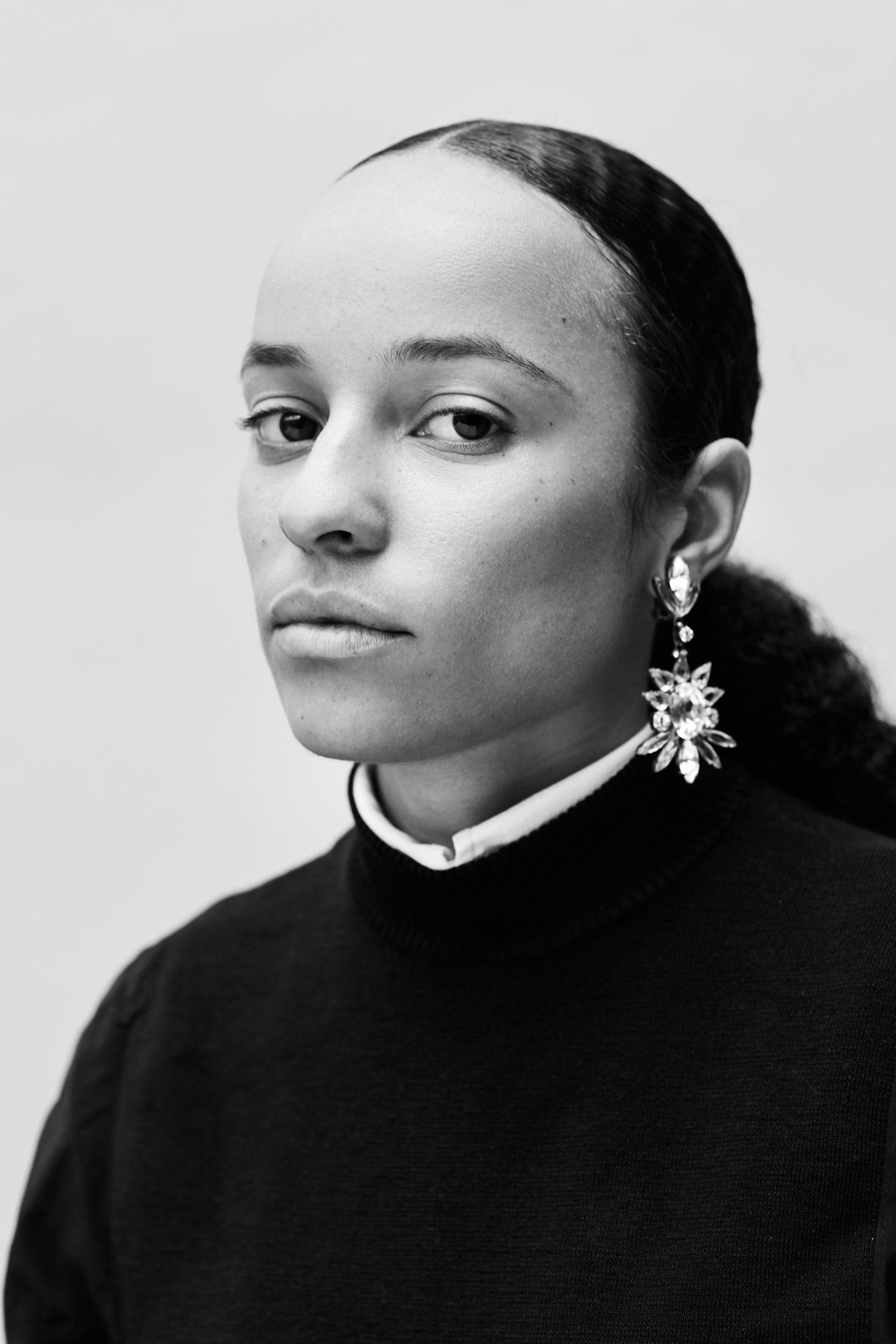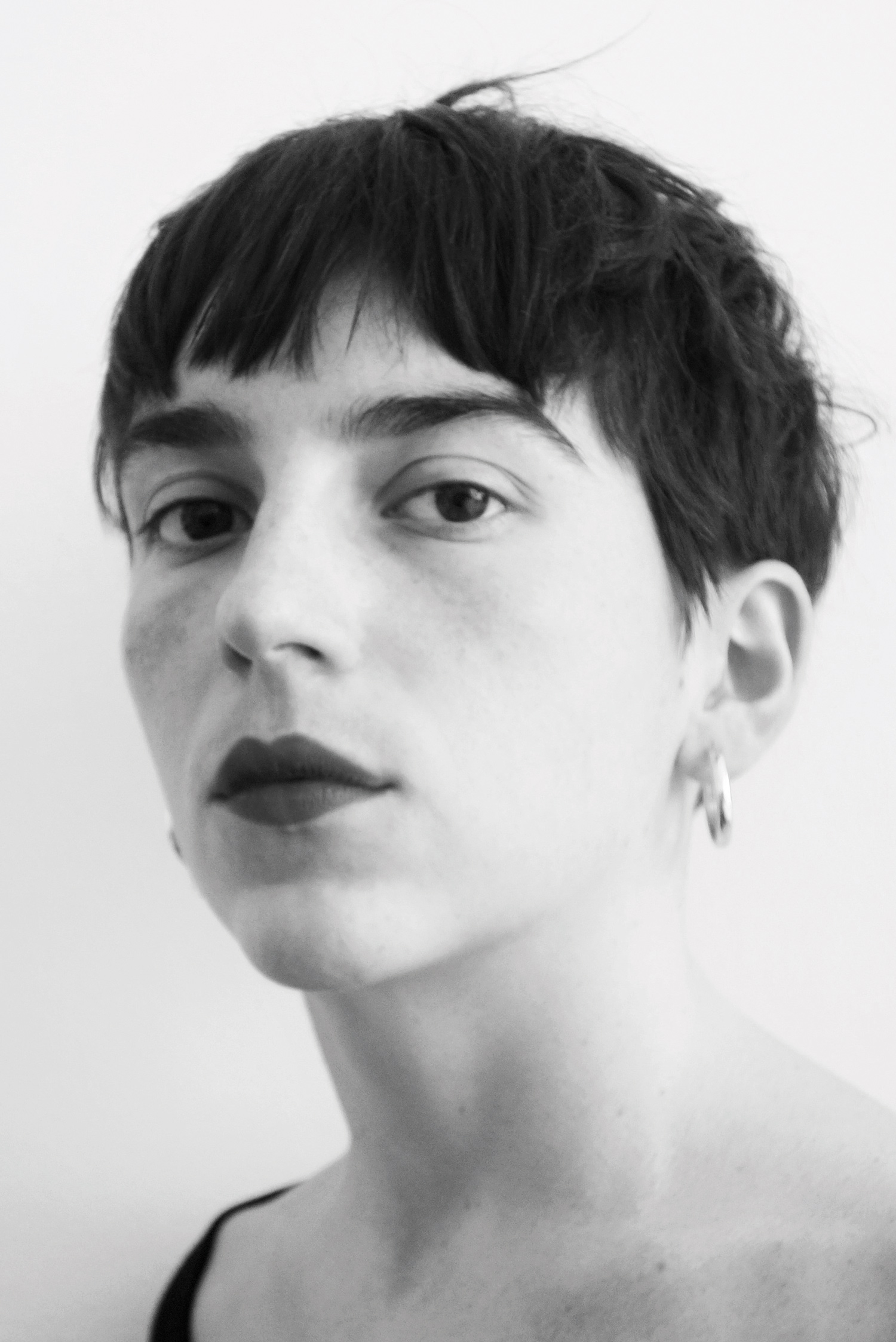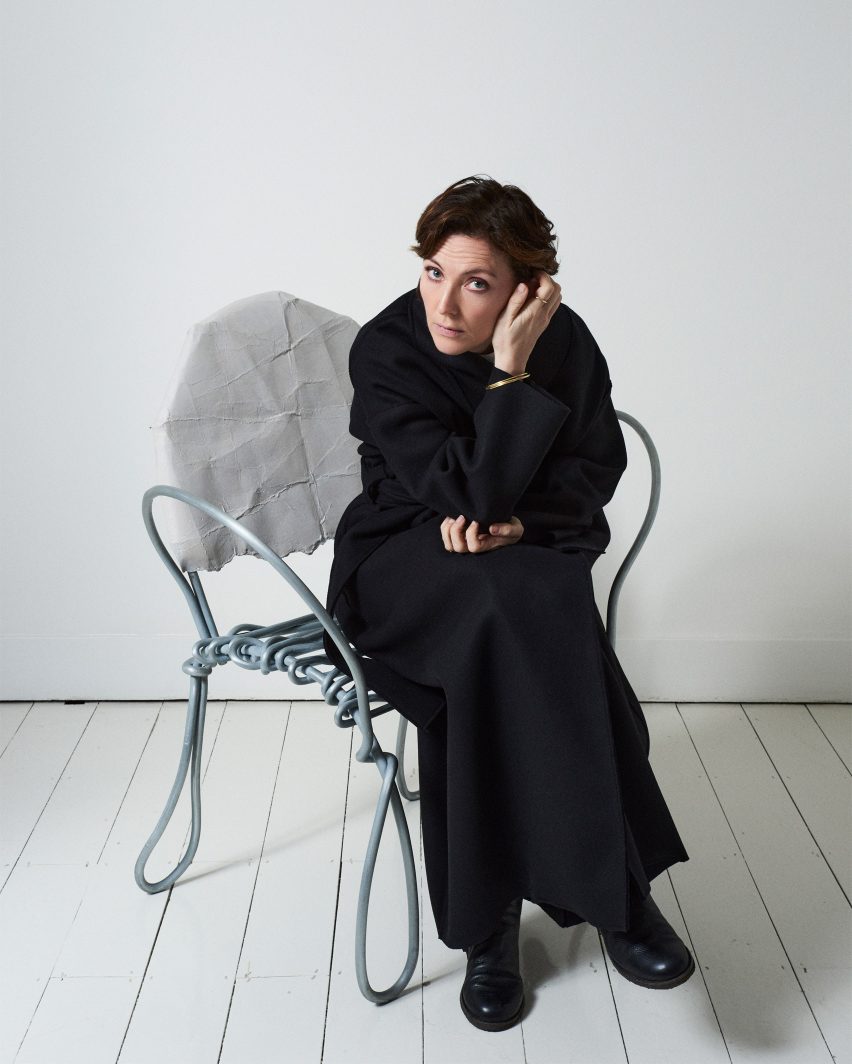Mistranslation and Diaspora:
The Brilliance of Fashion Collective CFGNY
by Simon Wu
The Brilliance of Fashion Collective CFGNY
by Simon Wu
‘Lightly worn by Franky’ reads the tag on a pair of black briefs studded with rhinestones, designed by art/fashion collective CFGNY (Concept Foreign Garment New York, or Cute Fucking Gay New York). We might imagine purchasing them to enjoy the uncanny, erotic intimacy with a stranger they afford. Their inner label, meanwhile, says ‘Made in Vietnam’. Even if Franky put them through the wash, might residue have been left by the seamstress who sewed them, or by the machine she used? Who else do these briefs put us in contact with?
Franky’s briefs were presented last year at Cover Street Market, CFGNY’s 2017 flagship store, alongside a collection of other garments. Over the past few years, the collective, comprised by Daniel Chew and Tin Nguyen, have employed the language of the fashion industry (garments, runway shows, models) mostly within fine art spaces to investigate questions of culture and labour in relation to Asian-American identity. The garments serve as a starting point for their ongoing dialogue with an intergenerational community of Asian American artists and thinkers. During the ten days Cover Street was open, they hosted several discussions at 47 Canal to discuss Asian-American identity, as well as a poetry reading, a lecture performance, and a party catered by Angela Dimayuga.
CFGNY belongs to a wave of other young fashion labels drawing aesthetic inspiration from marginalized communities, such as Telfar, Barragán and Maroon World. However, unlike much positivist work in this vein, which focusses primarily on questions of belonging, Chew and Nguyen are just as interested in alienation as an integral aspect of identity. Their clothing reflects what many diasporic children feel when they travel to their countries of ‘origin’ and feel a profound sense of rootlessness.
"However, unlike much positivist work in this vein, which focusses primarily on questions of belonging, Chew and Nguyen are just as interested in alienation as an integral aspect of identity."
Rather than traffic in cultural clichés, CFGNY draws from nostalgic patterns, materials and motifs that they refer to as ‘vaguely Asian.’ Chew and Nguyen often take inspiration from their childhoods: cute animal patterns, plaid silks and flannels from Vietnamese street style. (Nguyen is from a Vietnamese-American family; Chew is of Chinese-Burmese descent.) In New Fashion II, their April 2018 collection, stuffed animals grew from sheer dresses like tumours. Jackets were fashioned from pajama fabrics patterned with dotted florals or children’s cartoons. Some materials pointed directly to Vietnam: leather from a motorbike seat factory in the outskirts of the Ho Chi Minh City, trousers made from recycled woven plastics used to create plant canopies. More idiosyncratic references included Rei Kawakubo’s lumpy dresses, the industrial grunge of Bushwick’s queer scene, and the oversized suits and jelly slippers of elderly residents in New York’s Chinatown.
Neither Chew nor Nguyen is formally trained in sewing, so they collaborate closely with local tailors in Vietnam, often deferring to the tailors’ interpretation of their instructions. Sometimes, this can mean that zippers end up in different places, materials are swapped or garments are given a different fit. Synthetic Blend V (2019), CFGNY’s latest project at the RISD Museum in Providence, embraces this process of mistranslation. The projects’ tailors — Nguyệt Huế Nguyệt, Bùi Thị Mỹ Linh, Bùi Thị Lan Anh, Da Trần Văn Tân and Namsilk Tailor – were asked to create their interpretation of what a CFGNY garment might look like. The tailors, who place CFGNY in a Western context, draw from their perceptions of Western taste, while creating garments that, in the West, are perceived as aesthetically ‘Asian.’ The project cleverly scrambles these cultural signifiers.
Synthetic Blend V takes on a different meaning in Lower Manhattan. The rapid gentrification of Chinatown, spurred in part by the expanding constellation of art galleries there, places many Asian-Americans artists in a difficult position. Chew and Nguyen both moved to New York in 2006, and despite holding down a number of precarious freelance jobs, still enjoy a more comfortable middle-class status than the Chinatown residents who inspire their designs. The duo are aware of this tension, which they examined, sensitively and provocatively, in a June 2019 performance for their line Surface Trend, a collaboration with artist Carissa Rodriguez and choreographers Kiyoto Koseki and Stephen Kwok. In Seward Park, a vibrant centre of Chinatown life, models wearing CFGNY wandered in tow with other residents in the park, stopping at times to pose. Often, they blended in; at other times, they appeared awkward and distant. Children played on the jungle gym, a group of women practiced Tai Chi: most passersby paid the performance no notice. Rather than anesthetizing the differences between insiders and outsiders, long-time residents and newcomers, ‘West’ and ‘East’, the presentation made them even more palpable. CFGNY embraces this liminal position – the feeling of not being at home in either New York or Vietnam – as a privilege, a condition of heightened cultural sensitivity. They assume the responsibility of working in between them.
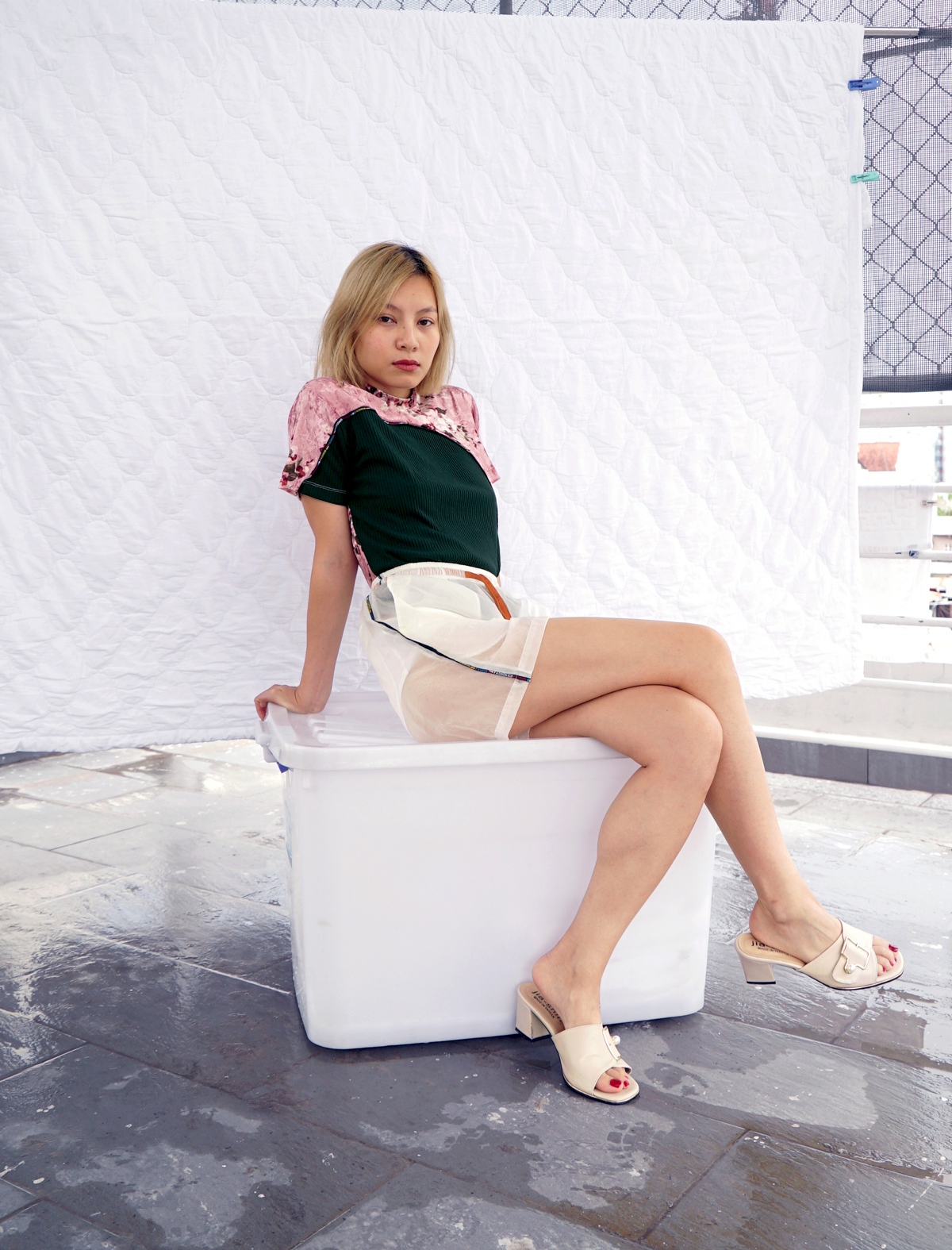
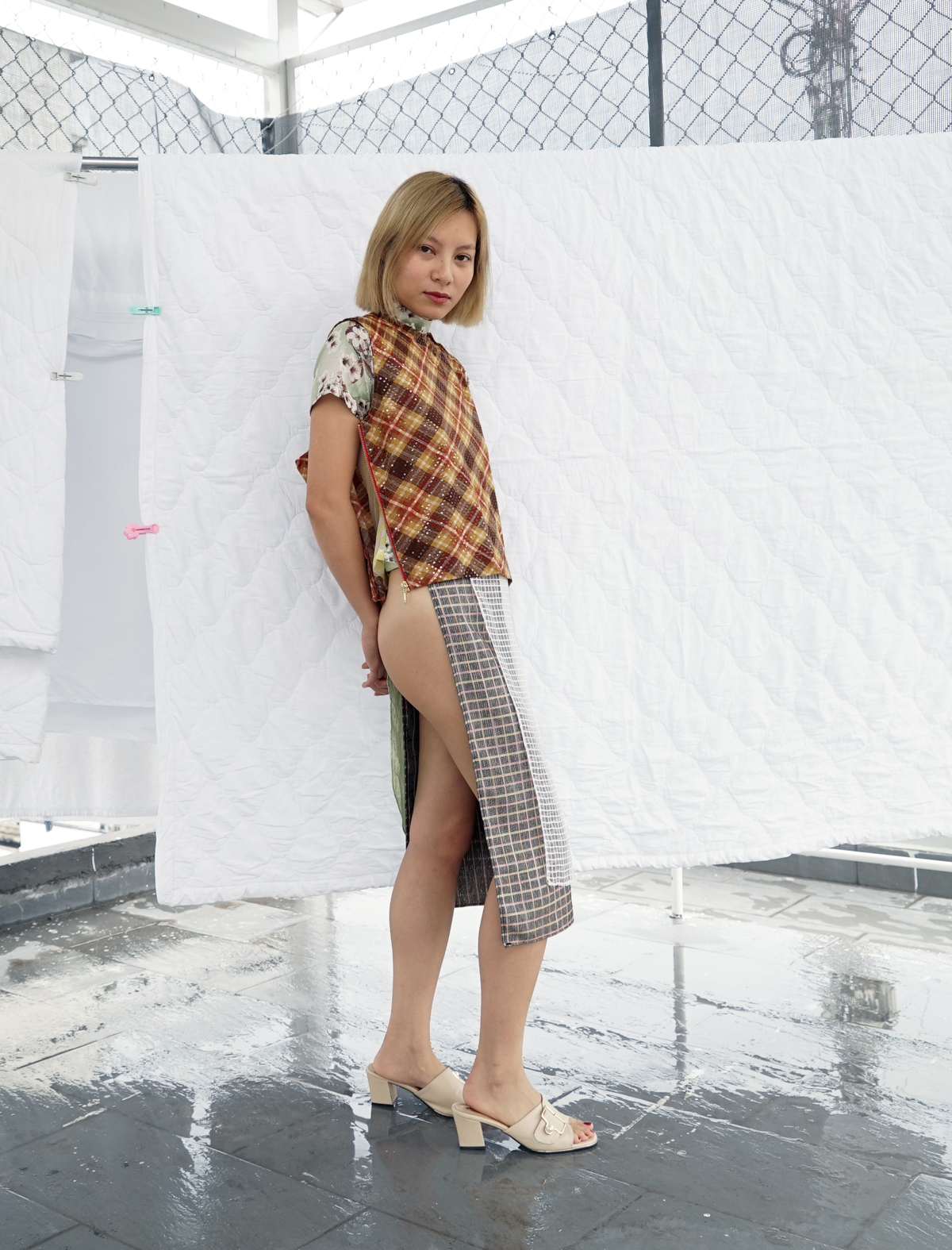
Image Courtesy CFGNY: Cover credit Mary Kang.
